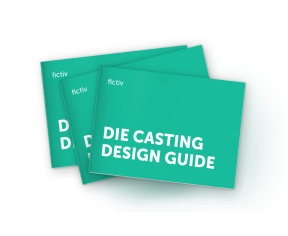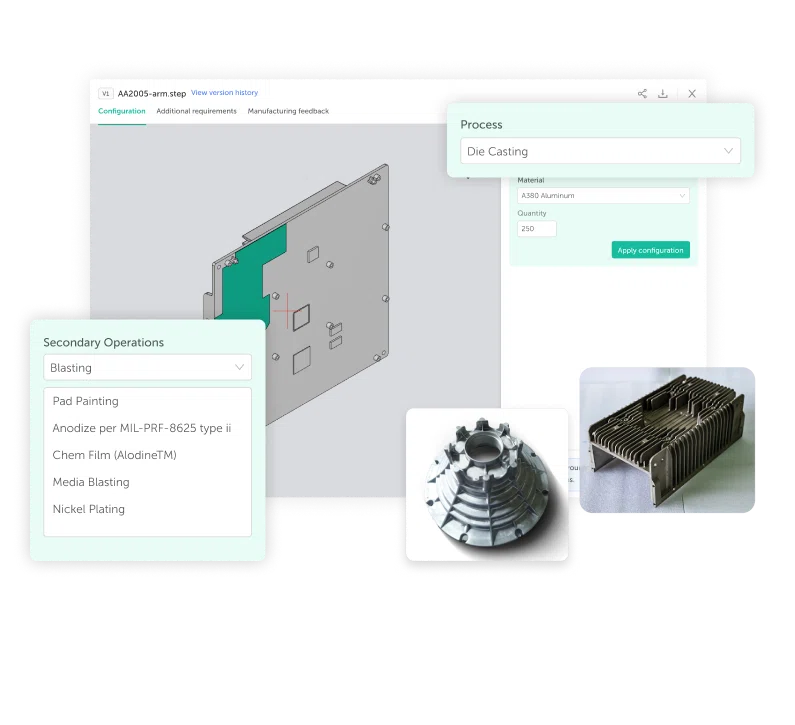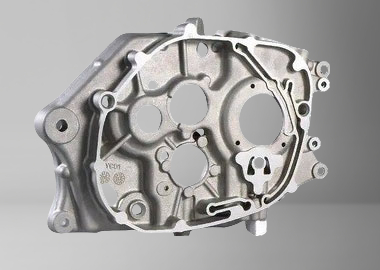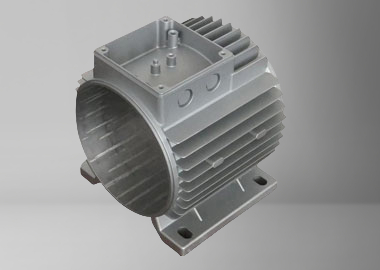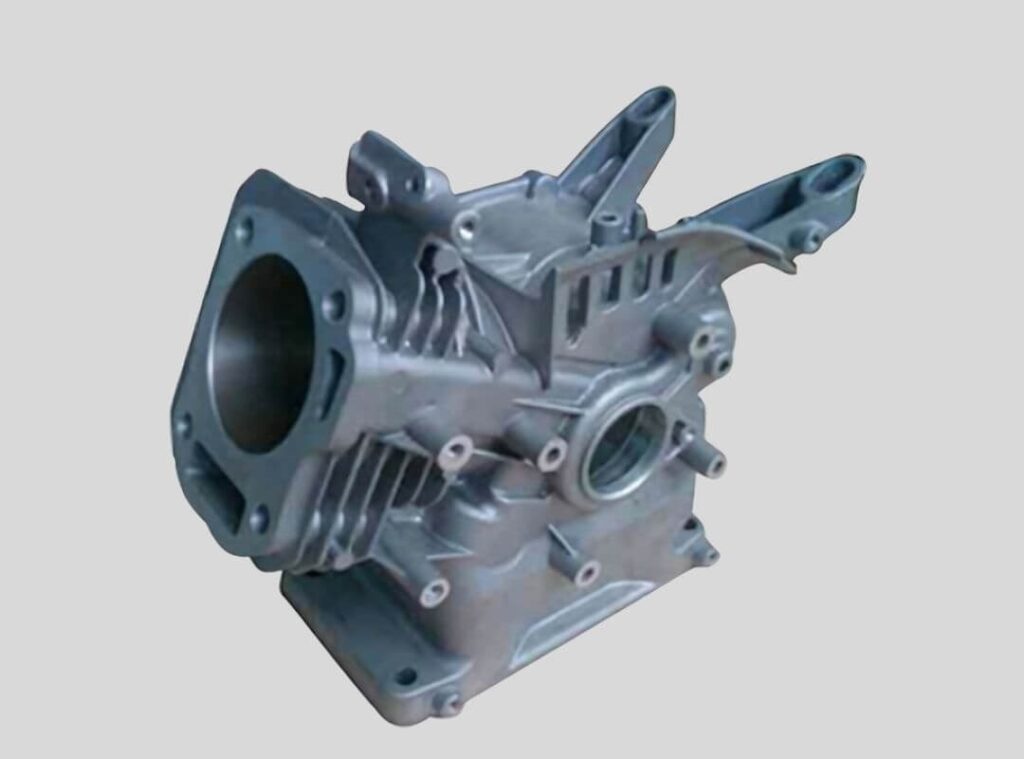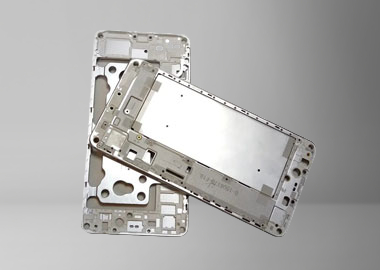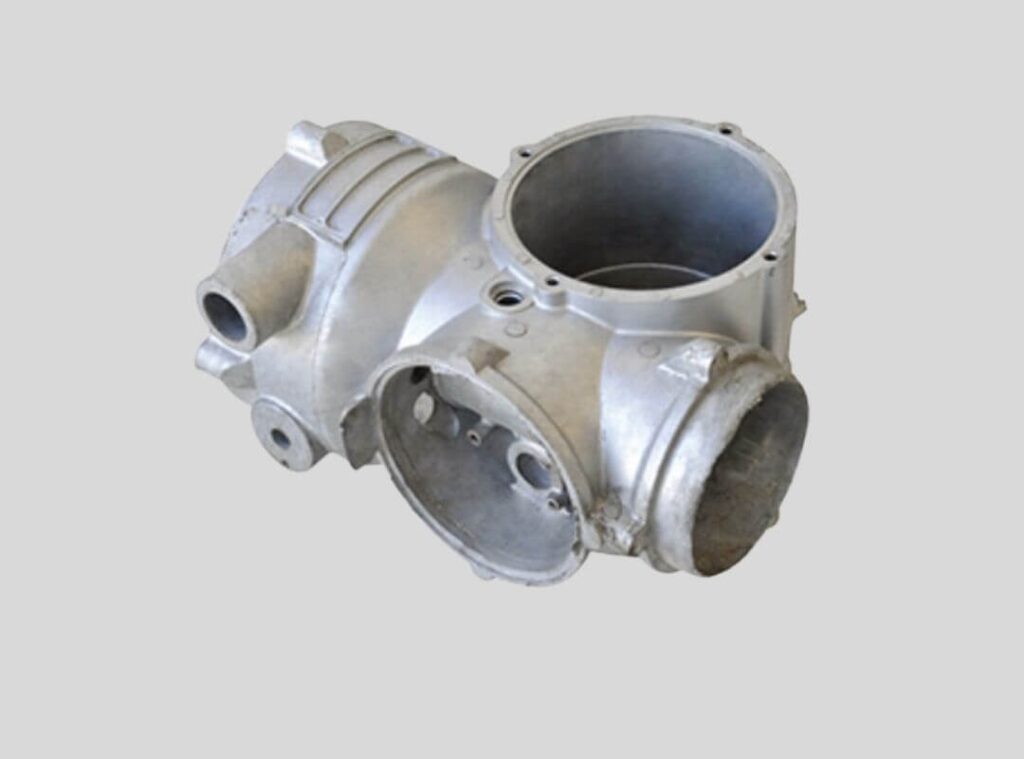Low Pressure Die Casting (LPDC) Manufacturer
Zero-Leak Aluminum Castings – Ensure 100% sealing performance & eliminate warranty risks.
Heat-Treatable Alloys – Stronger, safer, and longer-lasting structural parts.
One-Stop LPDC Solution – From tooling to finishing, save up to 30% in lead time & cost.
Large & Complex Components – Precision casting with minimal machining required.
±0.01mm
Tolearance
20+
Years Experience
20 Day
Die Casting Samples Delivered
Certifications
ISO 9001 & IATF 16949
China Low Pressure Die Casting (LPDC) Manufacturer and Supplier
IEC MOULD is a trusted Low Pressure Die Casting (LPDC) manufacturer and supplier in China, specializing in aluminum alloy casting for high-strength and complex components. With decades of experience in die casting mold design, low pressure casting production, CNC machining, and post-processing, we provide a complete one-stop solution from concept to finished parts.
Our LPDC technology ensures excellent metallurgical quality, minimal porosity, and superior mechanical performance — ideal for automotive, industrial machinery, lighting, energy, and aerospace applications.
With ISO 9001 and IATF 16949 certifications, state-of-the-art inspection equipment, and an experienced engineering team, IEC MOULD guarantees consistent quality, tight tolerances, and cost-effective production for every project.
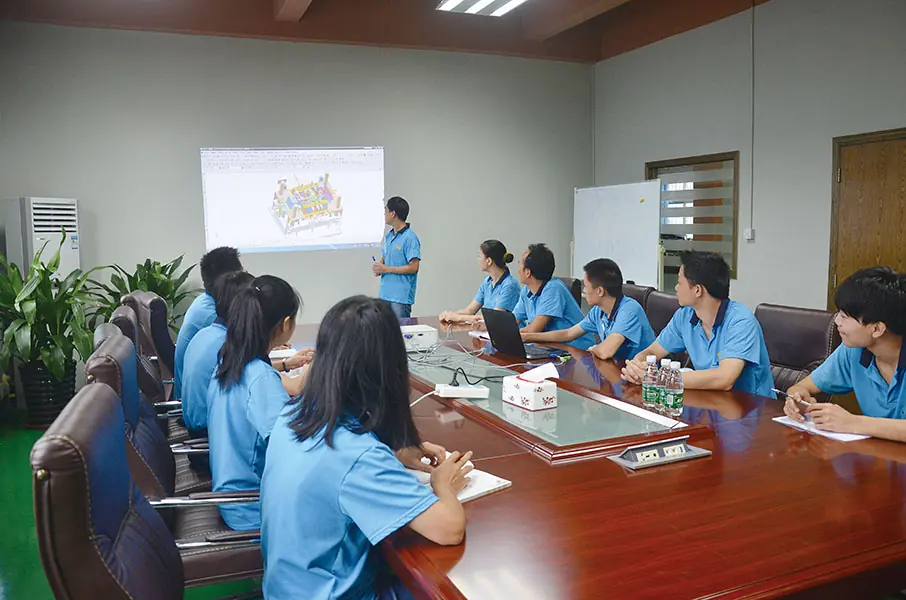
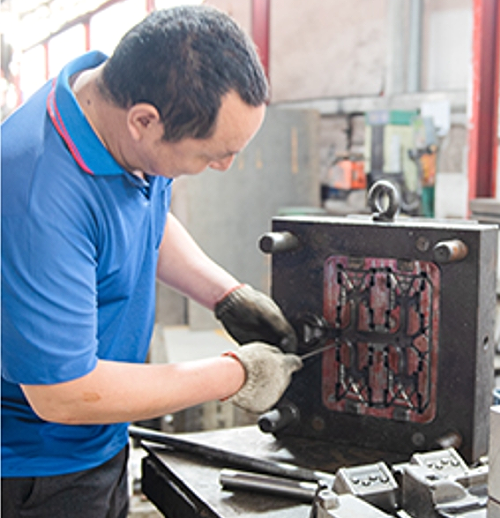
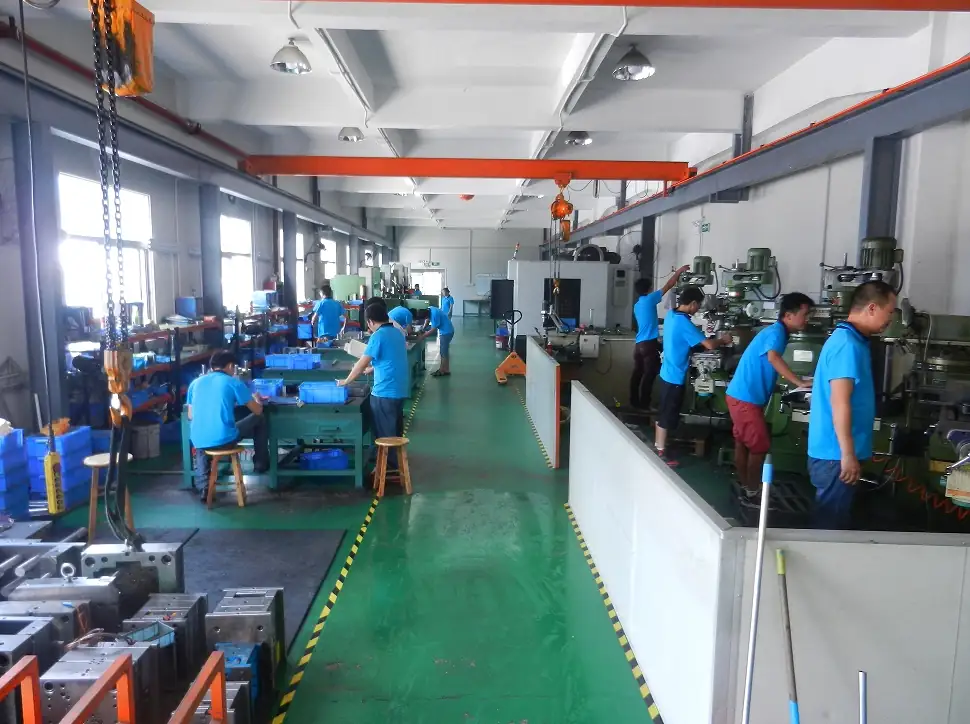
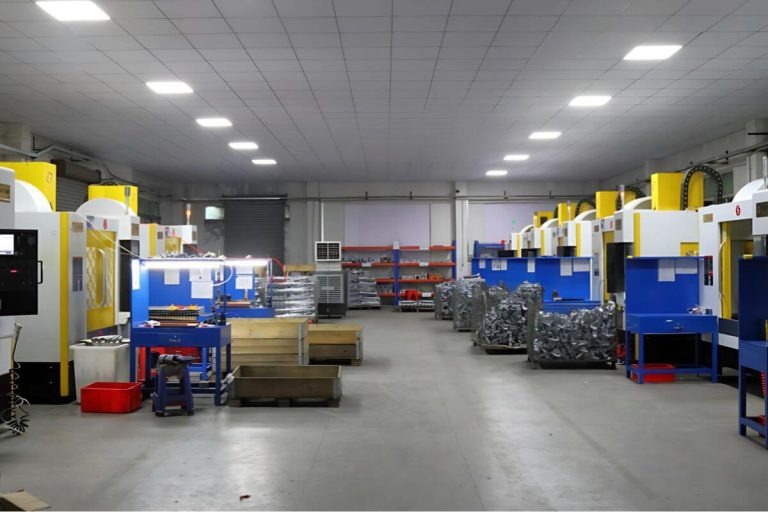
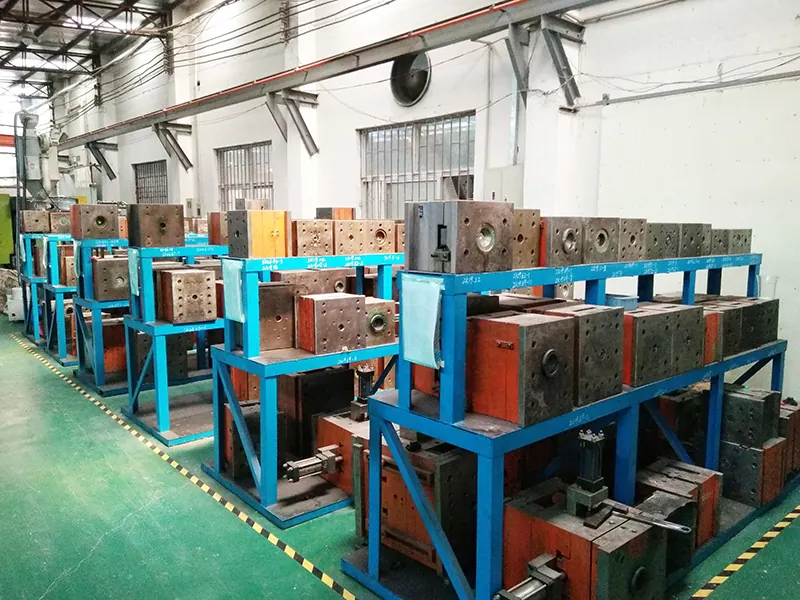
Our Comprehensive Low Pressure Die Casting (LPDC) Services
We offer comprehensive Low Pressure Die Casting (LPDC) services designed to meet diverse industrial requirements and deliver high-quality, high-strength aluminum components.
- Custom Low Pressure Die Casting – Specialized in aluminum alloys for structural and complex parts
- DFM & Moldflow Analysis – Optimize casting design, flow, and solidification to minimize porosity and defects
- Die Casting Mold Design & Manufacturing – Precision-engineered tooling for consistent performance and long mold life
- Die Casting CNC Machining – High-accuracy machining to achieve tight tolerances and fine surface finishes
- Die Casting Surface Treatments – Anodizing, powder coating, painting, and plating to enhance appearance and corrosion resistance
- Assembly Services – Providing fully assembled, ready-to-install products
- Quality Inspection – Advanced testing including CMM, X-ray, leak, and mechanical strength testing
With IEC MOULD, you get a true one-stop LPDC solution — from part design and tooling to casting, machining, finishing, and assembly — all under one roof.
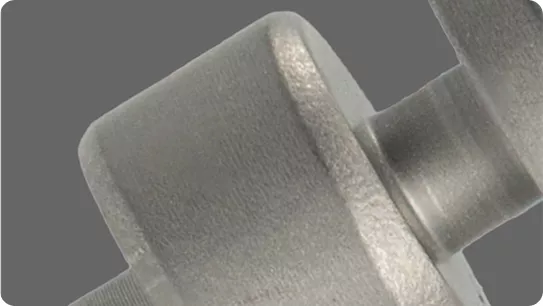
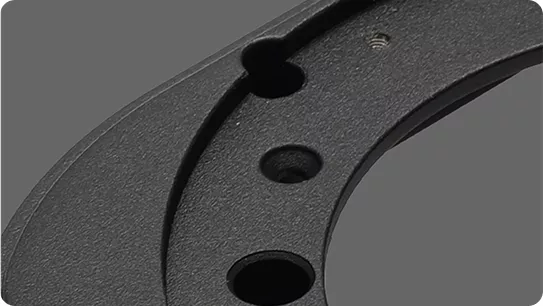
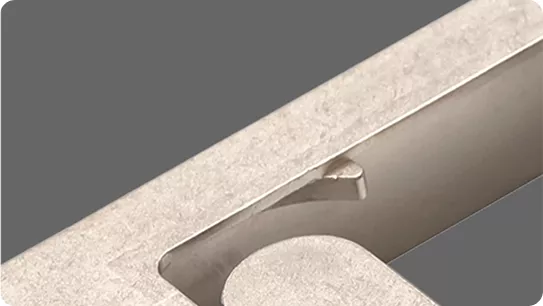
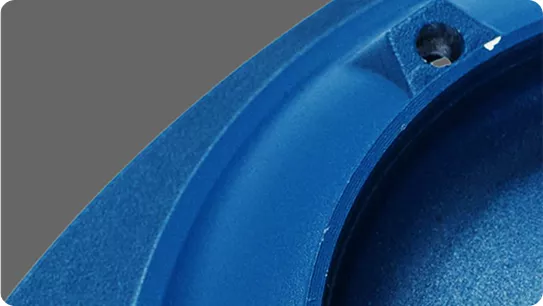
IEC Mould's Low Pressure Die Casting (LPDC) Capabilities and Technical Parameters
| Details | Specifications |
|---|---|
| Tolerance | Low Pressure Die Casting parts can typically achieve dimensional accuracy up to ±0.05mm after machining, ensuring stable and consistent results for structural and safety-critical components. |
| Minimum Wall Thickness | In LPDC, the recommended minimum wall thickness for aluminum alloys is 3–4mm, depending on the casting size and geometry, allowing for excellent metal flow and reduced porosity. |
| Wall Thickness Ratio | To ensure uniform filling and solidification, LPDC parts should maintain a 1:2 to 1:3 wall thickness ratio, minimizing internal stress and distortion. |
| Hole Diameter | For LPDC molds, holes smaller than 5mm are typically machined after casting. Threaded holes and precision bores are finished through secondary CNC machining. |
| Draft Angle | A minimum draft angle of 1°–2° is recommended in LPDC to facilitate smooth demolding and protect the mold surface. |
| Maximum Die Life (Cycles) | – Aluminum LPDC molds: approx. 80,000–150,000 cycles, depending on alloy and maintenance. – Copper or special alloys: up to 50,000 cycles. |
| MOQ (Minimum Order Quantity) | The standard MOQ for Low Pressure Die Casting is 50–100 pieces, ideal for medium-volume production and prototype validation. |
| Lead Time | Typical project lead time for LPDC is 25–35 days, depending on mold design complexity, part size, and post-processing requirements. |
Low Pressure Die Casting (LPDC) Parts We Manufactured
Whether it’s complex geometry, thin-wall precision, or large structural castings, our Low Pressure Die Casting (LPDC) technology ensures dense, defect-free aluminum parts with outstanding mechanical strength and surface quality.
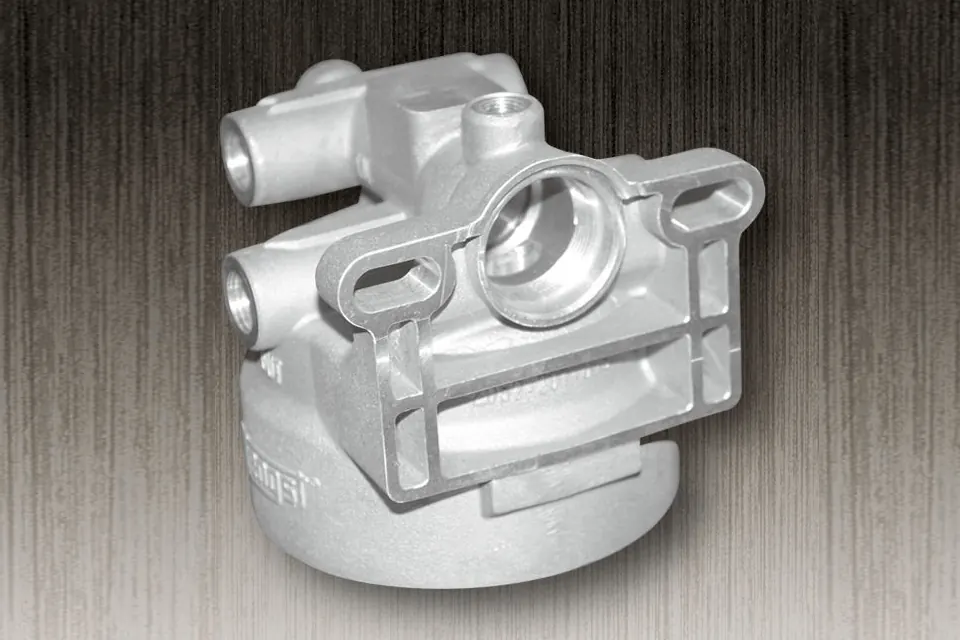
Electronics Part
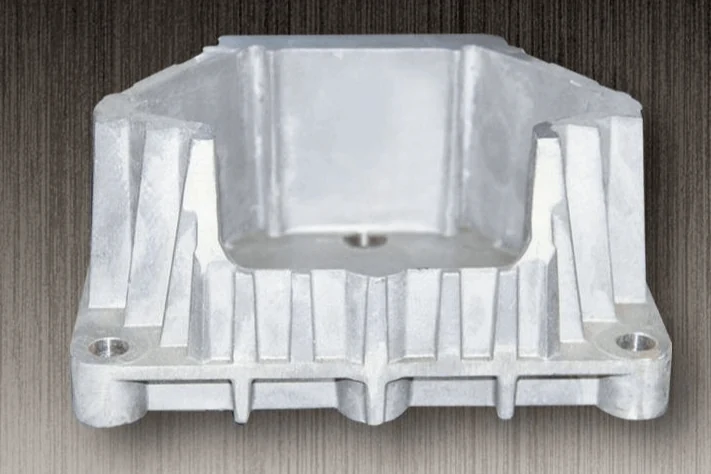
Automotive Part
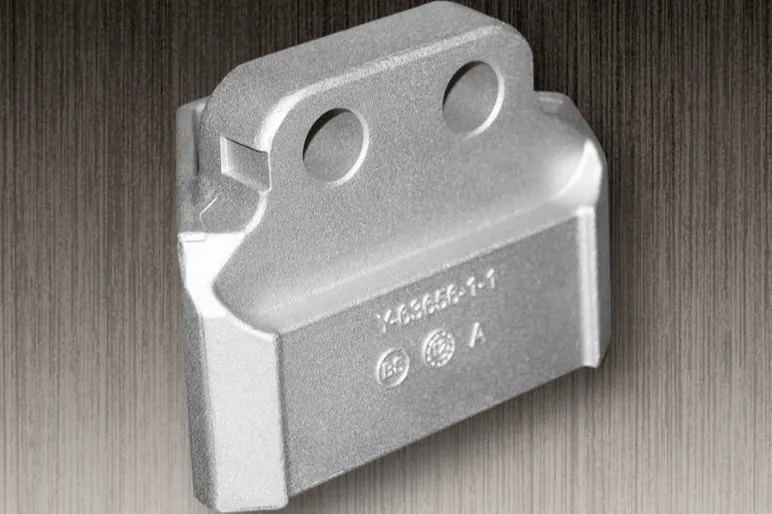
Home Appliances Part
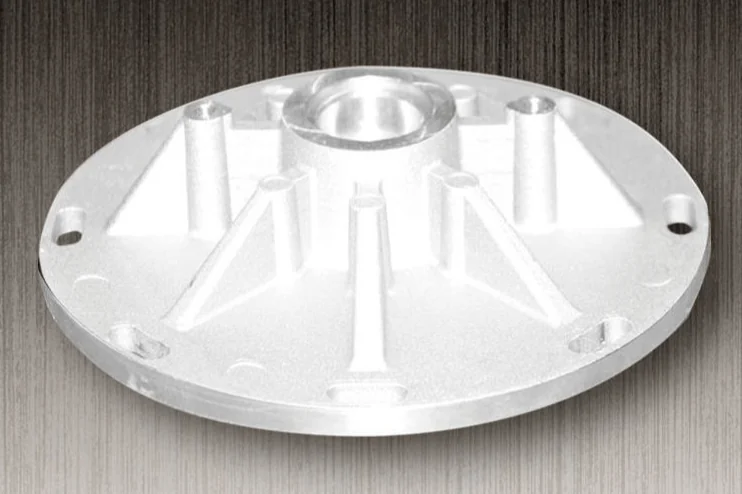
Industrial Machinery Part
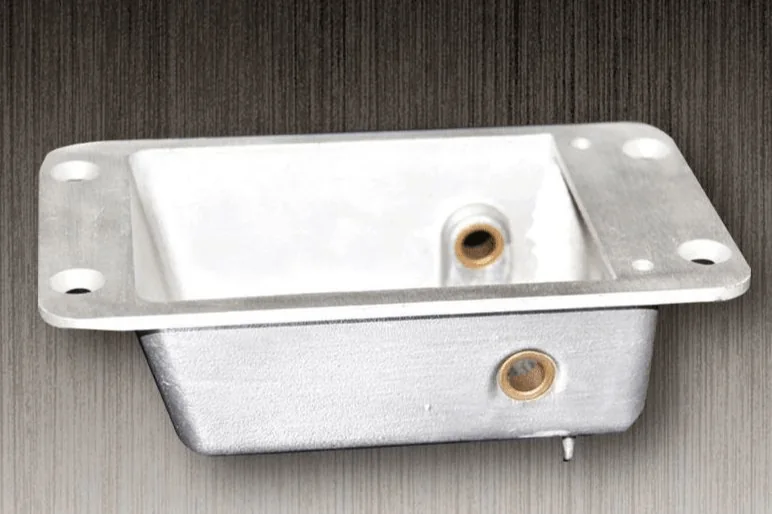
Medical Devices Part
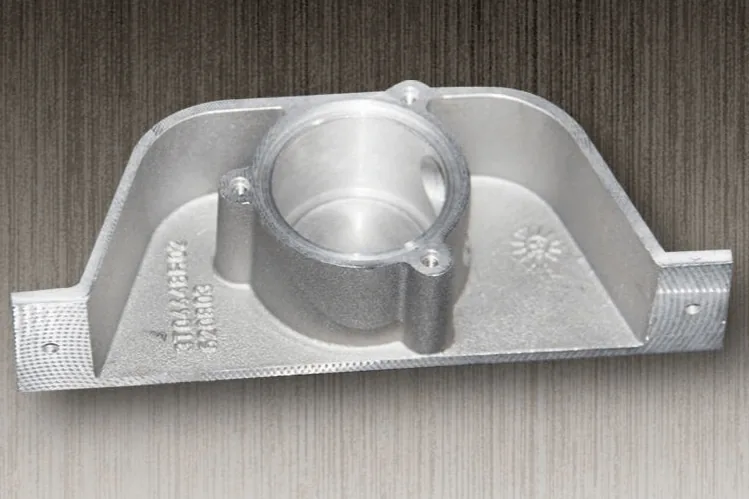
Engineering Part
Low Pressure Die Casting (LPDC) materials we used
Low Pressure Die Casting (LPDC) is ideal for producing high-strength, low-porosity aluminum and magnesium components with exceptional structural integrity. By using a controlled metal filling process under low pressure, LPDC minimizes turbulence, reduces air entrapment, and enables the use of heat-treatable alloys for demanding applications. Below is an overview of the most common materials we used for LPDC, key properties, and applications used in the LPDC process.
| Material | Key Features | Typical Applications | Why It Fits Low Pressure Die Casting |
|---|---|---|---|
| Aluminum Alloys (A356, A357, AlSi7Mg, AlSi10Mg) | Excellent fluidity, good weldability, high strength after heat treatment (T6), and low gas porosity | Automotive wheels, suspension arms, cylinder heads, structural housings, aerospace components | LPDC provides slow, controlled metal flow and solidification, minimizing porosity and ensuring high-density aluminum parts with superior mechanical properties. |
| Aluminum-Silicon Alloys (Al-Si series) | Excellent castability, corrosion resistance, and dimensional stability | Engine blocks, transmission cases, and heat-resistant industrial parts | Ideal for LPDC due to its smooth filling characteristics and ability to produce complex shapes with minimal defects. |
| Magnesium Alloys (AZ91, AM50, AM60) | Very light weight, good strength-to-weight ratio, and excellent damping properties | Automotive seat frames, electronic housings, aerospace interior parts | LPDC enables precise control of filling pressure and temperature, reducing oxidation and improving surface quality of magnesium castings. |
| Copper Alloys (Brass, Bronze) | High strength, excellent wear and corrosion resistance, and superior conductivity | Industrial fittings, cooling systems, electrical and marine components | The steady pressure and low turbulence in LPDC prevent air entrapment, achieving dense, high-performance copper alloy castings. |
| Special Heat-Treatable Aluminum Alloys (e.g., A356-T6, A357-T6) | Outstanding mechanical properties after T6 treatment, high fatigue resistance, and dimensional stability | Aerospace, EV battery housings, and heavy-duty automotive structures | LPDC’s smooth metal flow and low turbulence make it perfect for heat-treatable alloys requiring strength, ductility, and integrity. |
Why Choose IEC MOULD for your low pressure die casting part?
Choosing the right Low Pressure Die Casting (LPDC) manufacturer / supplier is essential for achieving consistent quality, reliability, and cost efficiency.
At IEC MOULD, we combine decades of engineering experience, advanced equipment, and strict quality standards to deliver precision aluminum castings that meet global requirements and exceed customer expectations.
- Comprehensive One-Stop Solution – From DFM & Moldflow analysis, mold design, and LPDC casting to CNC machining, surface treatment, and assembly, we provide a complete in-house solution that shortens lead times and reduces total cost.
- High-Integrity Castings – Our low-pressure filling system produces dense, low-porosity parts with excellent mechanical strength, dimensional accuracy, and superior surface quality.
- Expert Engineering Support – Our experienced engineers work closely with customers to optimize part design, improve manufacturability, and ensure stable mass production.
- Advanced Equipment & Process Control – Equipped with precision LPDC machines, temperature control systems, and automated casting lines, we ensure consistent performance and repeatability.
- Strict Quality Assurance – Every casting undergoes CMM inspection, X-ray testing, leak and strength testing, following ISO 9001 and IATF 16949 quality standards.
- Industry-Proven Applications – Trusted by global customers in automotive, aerospace, industrial, and energy sectors, IEC MOULD delivers reliable castings for demanding environments.
With IEC MOULD, you gain a trusted partner that not only manufactures parts—but also provides engineering-driven LPDC solutions to help you build stronger, safer, and more efficient products.

Low Pressure Die Casting (LPDC) Frequently Questions & Answers
What types of parts and industries is LPDC best suited for?
LPDC excels at producing structurally critical, leak-tight aluminum parts with complex geometries, such as automotive suspension components, aerospace brackets, energy battery trays, and industrial housings.
How does LPDC ensure high quality and low defect rates?
By using low, controlled pressure for metal filling, combined with degassing, filtration, and precise temperature control, LPDC minimizes porosity and shrinkage. We also employ advanced inspection methods including X-ray, CMM, and pressure testing to guarantee part integrity.
What alloys are compatible with LPDC and can they be heat treated?
Common alloys include A356, A357, 319, and magnesium AZ91, all of which support heat treatments like T5 and T6 to improve strength, hardness, and fatigue resistance—critical for demanding applications.
What are typical dimensional tolerances and surface finishes achievable with LPDC?
LPDC provides dimensional tolerances around ±0.15 to ±0.25 mm, suitable for tight-fitting assemblies. Surface finishes are smooth, often requiring minimal post-processing such as machining or coating.
What is the typical lead time and minimum order quantity (MOQ) for LPDC projects?
We offer flexible production starting from as low as 50 pieces, with lead times usually between 4 to 8 weeks depending on complexity and order size. Our in-house tooling and process controls ensure reliable delivery schedules.
How does LPDC compare cost-wise to other casting methods like HPDC or sand casting?
LPDC balances tooling cost and part quality effectively, offering lower defect rates and better mechanical properties than sand casting, with tooling costs and cycle times generally lower than HPDC for medium-sized parts and volumes.
How do you support customers throughout the LPDC production process?
We provide end-to-end services including DFM consultation, mold design & manufacturing, MOLDFLOW simulation, casting production, CNC machining, surface treatment, quality inspection, and assembly—ensuring your parts meet exact requirements on time and budget.
Other Die Casting Technologies You May Looking for
What is Low Pressure Die Casting?
Low Pressure Die Casting (LPDC) is a permanent mold casting process in which molten metal is gently filled from the bottom of the die using low gas pressure(0.7-1.5 bar). This bottom-fed, controlled filling minimizes turbulence, reduces porosity, and enables directional solidification, resulting in high-integrity aluminum components.
Unlike High Pressure Die Casting (HPDC), which uses extremely high injection pressures to fill the mold rapidly, LPDC’s controlled filling and solidification allow for heat-treatable parts, thicker wall sections, and excellent mechanical properties. For these reasons, LPDC is commonly used in automotive structural parts, wheels, suspension arms, industrial housings, and other critical applications requiring leak-tightness and strength.
Why Choose LPDC?
- Reliable Quality for QC Teams – LPDC ensures dense, low-porosity aluminum parts with stable dimensions and consistent performance, reducing rework and warranty risks.
- Design Flexibility for Engineers – The controlled low-pressure filling allows complex geometries, uniform wall thickness, and supports heat-treatable alloys (A356, A357) for stronger, lightweight designs.
- Cost Efficiency for Purchasing Teams – Longer tool life, reduced scrap rate, and minimal machining help lower total production costs and improve lead time efficiency.
- Proven Performance Across Industries – Ideal for automotive, aerospace, and industrial applications that demand high integrity, durability, and precision.
How Low Pressure Die Casting Works?
Low Pressure Die Casting (LPDC) is a precise and controlled casting process that uses low-pressure air to force molten metal into a reusable metal die. Unlike gravity casting, LPDC offers better control over metal flow, resulting in high-quality castings with excellent mechanical properties and minimal porosity. Here is a step-by-step breakdown of how LPDC works:
Step 1. Mold Preparation and Preheating
The process begins with the preparation of the metal mold (die). The die is thoroughly cleaned and preheated to an optimal temperature, usually around 200°C to 300°C. Preheating helps to Ensure proper metal flow + Reduce thermal shock + Improve surface finish and consistency.
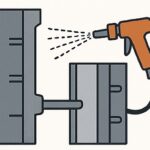
Step 3: Application of Low Pressure
Once everything is in place, low pressure air (usually 0.3 to 1.5 bar) is gradually applied to the sealed holding furnace. This pressure forces the molten metal up through the riser tube and into the die cavity from the bottom up.
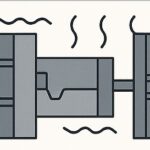
Step 5: Solidification Under Pressure
After the mold is completely filled, the applied pressure is maintained. This helps to compensate for any metal shrinkage during solidification and ensures that the metal remains in full contact with the die walls. Solidification starts from the farthest point in the cavity and proceeds directionally toward the riser tube. This directional solidification: Improves structural integrity + Reduces shrinkage porosity + Enhances the density + strength of the casting

Step 7. CNC Machining & Post-processing
Trimming, threading, and machining to final tolerance.

Step 2: Molten Metal Holding Furnace Setup
Below the die, a sealed holding furnace is filled with molten metal. A ceramic riser tube extends vertically from the furnace to the die cavity above. The furnace is kept at a stable temperature to maintain metal fluidity and avoid oxidation. The riser tube is submerged in the molten metal and connects directly to the gate system of the die.
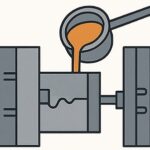
Step 4: Die Cavity Filling
The molten metal fills the cavity slowly and evenly under constant low pressure. Because the metal enters from the bottom and rises to the top, it gently displaces the air inside the cavity, allowing for a clean and complete fill.This process is particularly beneficial for components with complex geometries or thin wall sections, where precise flow control is essential to avoid defects.
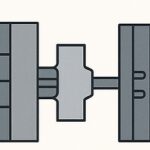
Step 6. Cooling and Ejection
Once the casting has fully solidified, the pressure is released and the die is allowed to cool further. The mold is then opened, and the solidified casting is ejected using ejector pins. Because LPDC uses a permanent metal mold, the die can be reused for multiple cycles after applying appropriate die release agents and re-cleaning.

Step 8. Surface Treatment & Final QA Inspection
Options include anodizing, powder coating, chromate, shot blasting, polishing. X-ray, leak test, CMM, dimensional reports, microstructure validation.

Advantages of Low Pressure Die Casting
| Advantage | For Engineers | For Procurement Teams | For Quality Control (QC) |
|---|---|---|---|
| Excellent Dimensional Accuracy (±0.1 mm) | Ensures design intent is met with minimal redesign or adjustments. | Reduces need for extra machining, lowering cost per part. | Easier to verify part dimensions, reducing inspection time. |
| Large & Complex Part Capability | Enables creation of lightweight, high-strength structural parts. | Consolidates multiple components into one casting, lowering sourcing complexity. | Fewer assembly points mean fewer potential defect locations. |
| Low Gas Porosity | Improves mechanical performance and heat-treatability of parts. | Reduces warranty claims and returns due to internal defects. | Higher pass rate during X-ray or ultrasonic inspections. |
| Thin-Wall Designs with Strength | Achieves weight reduction without sacrificing performance. | Lower material usage reduces cost and supports sustainability goals. | Maintains part integrity during quality stress tests. |
| Extended Mold Life | Consistent mold performance ensures repeatable results over long runs. | Lowers tooling replacement costs and increases ROI. | Fewer dimensional deviations due to worn tooling. |
| Reduced Machining Requirements | Shortens development cycle by minimizing post-processing steps. | Speeds up delivery schedules for customer orders. | Less chance for defects introduced during secondary machining. |
| Material Versatility | Flexibility to choose alloys for specific application needs. | Ability to switch alloys without major tooling changes. | Consistent inspection parameters across different materials. |
| Heat-Treatable, Dense Parts | Allows use of T6 and similar treatments for enhanced strength. | Expands product applications to higher-value markets. | Ensures parts pass fatigue and stress tests. |
| Lower Energy Consumption | Supports sustainable engineering projects. | Reduces operational costs over large-scale production. | Helps achieve sustainability KPIs for production quality metrics. |
| Global Standards Compliance | Meets ISO, ASTM, JIS requirements for global markets. | Simplifies cross-border sourcing and logistics. | Consistent quality regardless of destination market. |
Disadvantages of Low Pressure Die Casting
| Limitation | For Engineers | For Procurement Teams | For Quality Control (QC) |
|---|---|---|---|
| Slower Production Cycle | LPDC uses lower injection pressure, resulting in longer filling and solidification time compared to HPDC. | Reduced productivity may increase per-unit cost for large volume orders. | More process monitoring needed to ensure consistency across slower cycles. |
| Higher Mold and Equipment Cost | Requires specialized pressurized furnace and sealing systems. | Initial investment is higher than gravity casting, impacting early-stage project budgets. | More parameters to maintain mold integrity, increasing maintenance workload. |
| Limited Suitability for Very Thin Walls (<2.5mm) | Difficult to achieve ultra-thin geometries due to lower metal flow pressure. | May restrict material and design flexibility for lightweight cost-sensitive components. | Increased variation risk at wall transitions during inspection. |
| Complex Setup and Process Control | Needs precise control of pressure, temperature, and filling rate to avoid defects. | More technical expertise required, leading to higher supplier qualification costs. | More variables to monitor (gas pressure, mold temperature, solidification time). |
| Lower Dimensional Precision vs. HPDC | Typical tolerance is ±0.1mm–±0.2mm, requiring more post-machining for critical fits. | Extra machining adds lead time and cost to the final product. | Higher chance of dimensional deviations in tight-tolerance zones. |
| Not Ideal for Very Small Parts | The process is optimized for medium to large components, not micro or miniature castings. | Less cost-effective for low-weight, high-quantity products. | Harder to inspect small LPDC parts with conventional NDT tools. |
| Longer Cooling and Cycle Time | Extended solidification may slow total production output. | Increases delivery time for urgent orders. | Higher thermal fatigue impact on molds, requiring closer monitoring. |
| Limited Alloy Options Compared to HPDC | Works best with aluminum and magnesium alloys; zinc and copper alloys are rarely used. | Reduces flexibility when managing multi-alloy product lines. | Different inspection standards needed when switching alloys. |
| Potential Oxidation Risk | Molten metal exposed to air for longer may form oxide films. | May require additional finishing or surface treatment. | Extra checks needed to detect oxide-related inclusions. |
| Requires Skilled Operators | Process relies heavily on controlled parameters and real-time monitoring. | Fewer suppliers globally have strong LPDC expertise, affecting sourcing. | Operator skill variation can affect part consistency and inspection outcomes. |
Low Pressure Die Casting vs Other Die Casting Technologies

| Feature | Low Pressure Die Casting (LPDC) | High Pressure Die Casting (HPDC) | Gravity Die Casting (Permanent Mold Casting) | Sand Casting |
|---|---|---|---|---|
| Filling Pressure | Controlled low pressure (0.7–1.5 bar) ensures smooth and stable metal flow | Very high (1000–2500+ bar), causing turbulence | Metal filled by gravity only | Metal filled by gravity only |
| Porosity | ✅ Very low porosity due to smooth filling and minimal turbulence | ⚠️ Moderate; vacuum die casting needed to reduce | ✅ Low | ❌ High – prone to air entrapment |
| Heat Treatment Capability | ✅ Excellent — suitable for T5/T6 processes | ❌ Limited due to trapped gases | ✅ Good | ✅ Good |
| Dimensional Accuracy | ⭐⭐⭐ ±0.2 mm typical — good for large, complex parts | ⭐⭐⭐⭐ ±0.05–0.1 mm — ideal for thin walls | ⭐⭐ ±0.3 mm | ⭐ ±0.5 mm or more |
| Surface Finish | ⭐⭐⭐ Smooth (Ra 3.2–6.3 μm) | ⭐⭐⭐⭐ Very smooth (Ra 1.6–3.2 μm) | ⭐⭐ Moderate | ⭐ Rough |
| Wall Thickness | Medium (≥3 mm) | Thin (1–1.5 mm possible) | Medium | Thick (≥5 mm) |
| Part Size Capability | ✅ Medium to very large parts (wheels, suspension arms, housings) | ⚠️ Small to large (limited by press size) | ✅ Medium to large | ✅ Very large |
| Mechanical Properties | ✅ Excellent — dense, heat-treatable structure | ⚠️ Moderate — affected by porosity | ✅ Good | ⚠️ Variable |
| Tooling Cost | 💰 Medium – lower than HPDC but higher than sand casting | 💰💰 High – complex steel molds required | 💰 Medium | 💰 Low |
| Production Speed | ⏩ Moderate – longer cycles but higher consistency | ⏩ Very fast – ideal for high volume | ⏩ Slow | ⏩ Very slow |
| Suitable Alloys | ✅ Aluminum, Magnesium | ✅ Aluminum, Zinc, Magnesium | ✅ Most non-ferrous alloys | ✅ Almost all metals |
| Automation Level | ✅ Easy to automate (stable process) | ✅ Highly automated (high-speed) | ⚠️ Partially automated | ❌ Mostly manual |
| Ideal for | Structural components requiring high integrity and heat treatment (e.g., wheels, suspension parts, chassis) | Thin-walled, high-volume precision parts (e.g., housings, electronics, engine covers) | Medium-complexity parts, moderate production volumes | Large prototypes, low-volume, or very heavy parts |
| Overall Cost Efficiency | 💎 Excellent balance of quality, strength, and cost | 💎 Best for mass production only | ⚙️ Good for medium runs | 🧱 Suitable for prototyping only |
Low Pressure Die Casting (LPDC) Applications
Low Pressure Die Casting (LPDC) is widely adopted across multiple industries that demand high strength, tight dimensional control, and heat-treatable aluminum parts. Its ability to produce dense, low-porosity, and structurally sound components makes it ideal for automotive, aerospace, industrial, and energy applications.
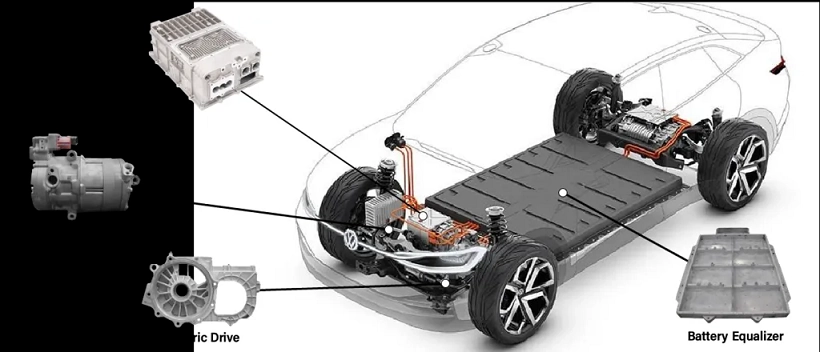

LPDC is widely used in the automotive sector, producing large and structural aluminum components such as wheels, suspension arms, chassis parts, subframes, and battery enclosures. These components require high strength, excellent ductility, and low porosity, making Low Pressure Die Casting ideal for achieving lightweight, heat-treatable, and safety-critical parts for modern vehicles.
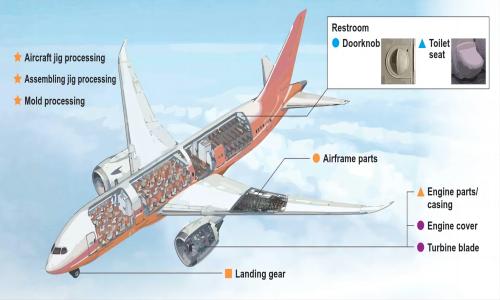
Aerospace Industry:
Low Pressure Die Casting is also applied in aerospace manufacturing, producing airframe components, seat structures, brackets, and gearbox housings.
The process ensures superior material density and consistent mechanical properties, which are essential for lightweight designs and long-term performance in high-stress environments.

Consumer & Electronics Applications:
LPDC also serves the consumer and electronics industries, manufacturing lighting housings, appliance structures, and enclosure frames.
It ensures excellent surface finish, good thermal conductivity, and dimensional accuracy, reducing the need for post-machining and improving product appearance and reliability.
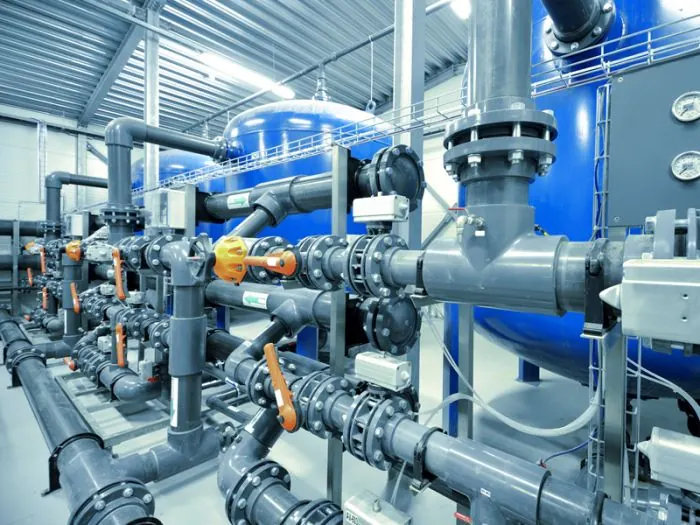
Industrial Equipment:
LPDC is ideal for industrial machinery components such as pumps, valve bodies, motor housings, and compressor parts.
It offers excellent strength-to-weight ratio, reduced porosity, and dimensional stability, ensuring long-lasting performance under high mechanical and thermal loads.
Low Pressure Die Casting (LPDC) Common Technical Specifications
Filling Pressure: LPDC typically operates at 0.7 to 1.5 bar of controlled gas pressure, gently pushing molten metal from the holding furnace into the mold. This low turbulence filling greatly reduces oxide formation and internal defects.
Cycle Time: LPDC cycle times usually range from 2 to 5 minutes, depending on the complexity and size of the casting. The process is slower than HPDC but offers higher quality and structural integrity.
Alloy Selection: Common alloys include A356, 6061, 319, and other heat-treatable aluminum alloys. These materials offer excellent mechanical properties, corrosion resistance, and weldability.
Wall Thickness: LPDC can produce wall thicknesses down to 3 mm, with uniform and consistent density across the casting.
Tolerances: LPDC typically achieves ±0.15 mm to ±0.25 mm tolerances — slightly wider than HPDC but with superior mechanical properties and heat treat capability.
Low Pressure Die Casting (LPDC) Common Challenges and Solutions
Slower Cycle Times: Compared to HPDC, LPDC is slower, which can impact throughput.
Solution: Optimize mold design and use multi-cavity tooling to increase output without compromising quality.Tooling Complexity: LPDC tooling must be designed for vertical filling and low-pressure feeding systems, which can be more complex.
Solution: Utilize advanced simulation tools like MOLDFLOW and thermal analysis to optimize gate and riser placement for defect-free parts.Surface Finish Variation: LPDC can produce slightly rougher surfaces than HPDC.
Solution: Apply precision machining or finishing processes (shot blasting, anodizing, powder coating) to meet aesthetic and dimensional requirements.Porosity from Gas Entrapment: Although less common than in HPDC, porosity can still occur if filling is not perfectly controlled.
Solution: Maintain strict control of furnace atmosphere, metal cleanliness, and filling speed to minimize gas inclusion.
Get in touch with us
Contact our experts and we will provide you quotation, DFM, Moldflow for your High Die Casting Part.
- yoyo@iec-mould.com
- 86 13712993487
- 86 13712993487
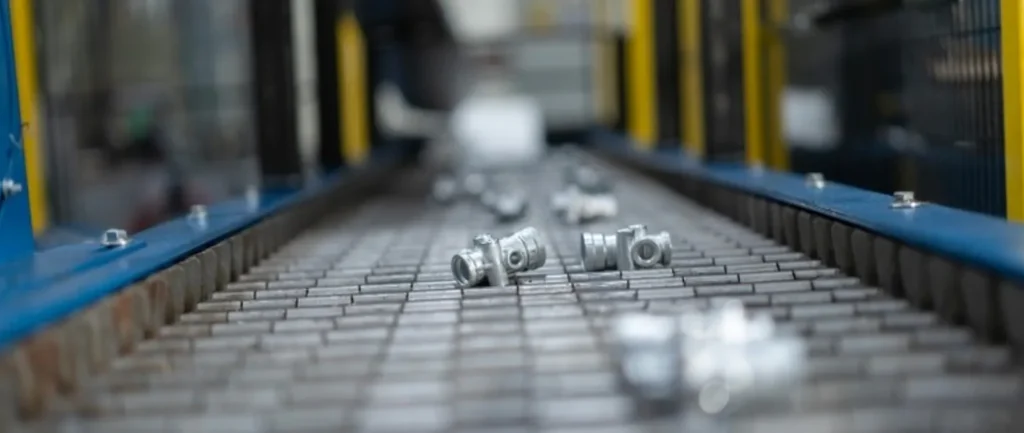
*Our team will answer your inquiries within 24 hours.
*Your information will be kept strictly confidential.

